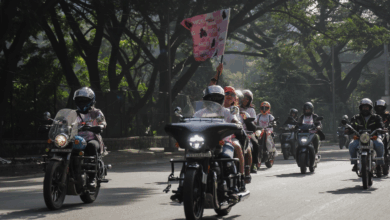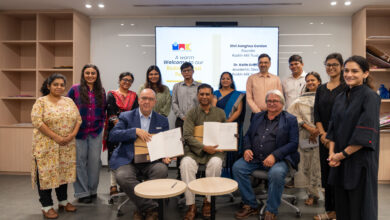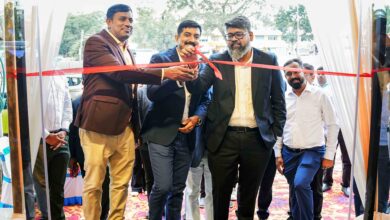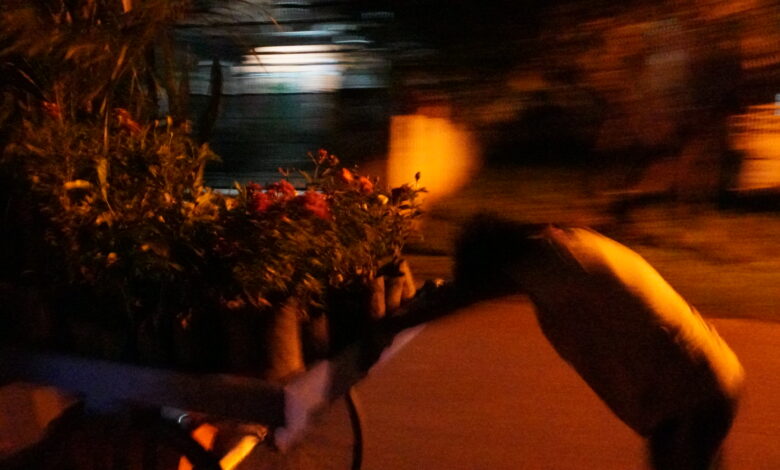
The convoluted saga of comprehending an unfamiliar language, the hooded streets illuminating with a reflection, partly in its original state and partly reflecting an assorted patchwork of what people have made of it; Nagasandra in a nutshell. The influence this city has on people is undeniably consequential, however amidst the chaos of language barriers and cultural variance we fail to register that we equally influence this city. Likewise, we co-exist.
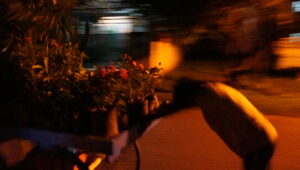
“Raghav, a 12-year-old pushing carts at night to meet needs of the day”
I came to Bangalore with 18 years of my life dragged through suitcases and a backpack full of dreams to thrive. Utterly oblivious to what I already possessed, I searched for what I should desire, GPA ranking?
Academic Drive? Flourishing Extracurricular Pursuits? Being surrounded by people who consistently exceeded expectations made me restless. The framework of unrealistic expectations clouded my creative space, technicalities replaced artistic judgement, and feasibility blocked the road to make it happen. The ferocity of uncertainty hit me like a truck, wounded I sat across the street disguised as an artist with a camera. Aside from the basics I barely knew how it functioned, holding that camera felt like a piece of a puzzle that fit but didn’t belong.
Maybe it was the dull glow of sodium streetlights, or the trembling presence of the trees moving in a harmony with the pleasant wind that made it feel like a whole new dimension. I was no longer curated, it felt like I was far, far away from the landscaped calm of an institution built on comfort and ambition. I was in the middle of something real, raw, and quietly enduring. I walked around the neighborhood, the camera tagged along. My inability to figure out the settings lead me to capture blurry, underexposed pictures and suddenly it felt too heavy. Perhaps it was the settings or perhaps it was the reality of those I captured. My lens witnessed small children carrying water cans twice their weight, teens around our age tend to street-side stalls even when the wind sticked too sharp at night. I was only beginning to explore when I saw a kid shove down a cart double his size through inclined streets. What bothered me was his familiarity with those streets, how he knew exactly where the street got too steep and which side of street was too dark. It wasn’t just the size of the cart, it was the weight of responsibility that drained his naïve innocence and yet he pushed through the exhaustion to arrive at relief, the relief of knowing he made it through another day. Raghav, a 12-year-old plant seller was a part of the same landscape where students walk in branded shoes and swipe ID cards into libraries. He half-heartedly smiled when I asked for a picture and proceeded to nod through fatigue. The picture was blurred, rushed, just like his reality, the reality of Nagasandra. A stone’s throw away from the orderly gates of Christ University’s Yeshwanthpur
campus, a world that thrives on predictability, performance, and privilege.
We came from homes with Wi-Fi, backup generators, and organic groceries. We study in colleges that hum with air conditioning and ambition, where sky is the limit and the privilege to cave into comfort is a flight away. A call is all it takes for the bank account numbers to provide for more than just sufficiency, but our constant need to whine? Well, that’s a whole another chapter. I study here. My days begin with carefully curated lesson plans, coffee from a machine, and classes conducted in advanced labs. Meanwhile, kids like the one I photographed begin their days with labor and sweat, not schedules, pushing weight, not ideas. Not that my struggle isn’t real, not that my inability to thrive should be invalidated, but just a few steps away from my proclaimed discomfort, I see those who grow up holding down their family’s fruit stall while balancing homework on their knees under a
streetlight. In the same street, two kinds of futures are being built, one with planners and deadlines, another with grit and guesswork.
What strikes me most is not the contrast. It’s the co-existence. These two worlds of opportunity and of survival don’t just collide here. They blend, overlap, brush shoulders, and share the same public space. We don’t live in silos. We affect each other, constantly. The resilience of the community that was here long before the concrete campus was built stays consistent. The students are temporary guests in a place that has its own rhythm and history. And yet, by merely being here, we shape it. Our Uber rides clog narrow lanes, our tastes influence what’s sold at the corner store, our silences, too, speak volumes. Those disoriented pictures are a living reminder that privilege and poverty are not distant concepts, they’re neighbors. And we cannot pretend that we do not intervene in each other’s lives, because simply by co- existing, we already do.
( Rida N Ahmed , is a student of Communication, Media and Psychology, Christ(Deemed To Be) University, Banglore).

